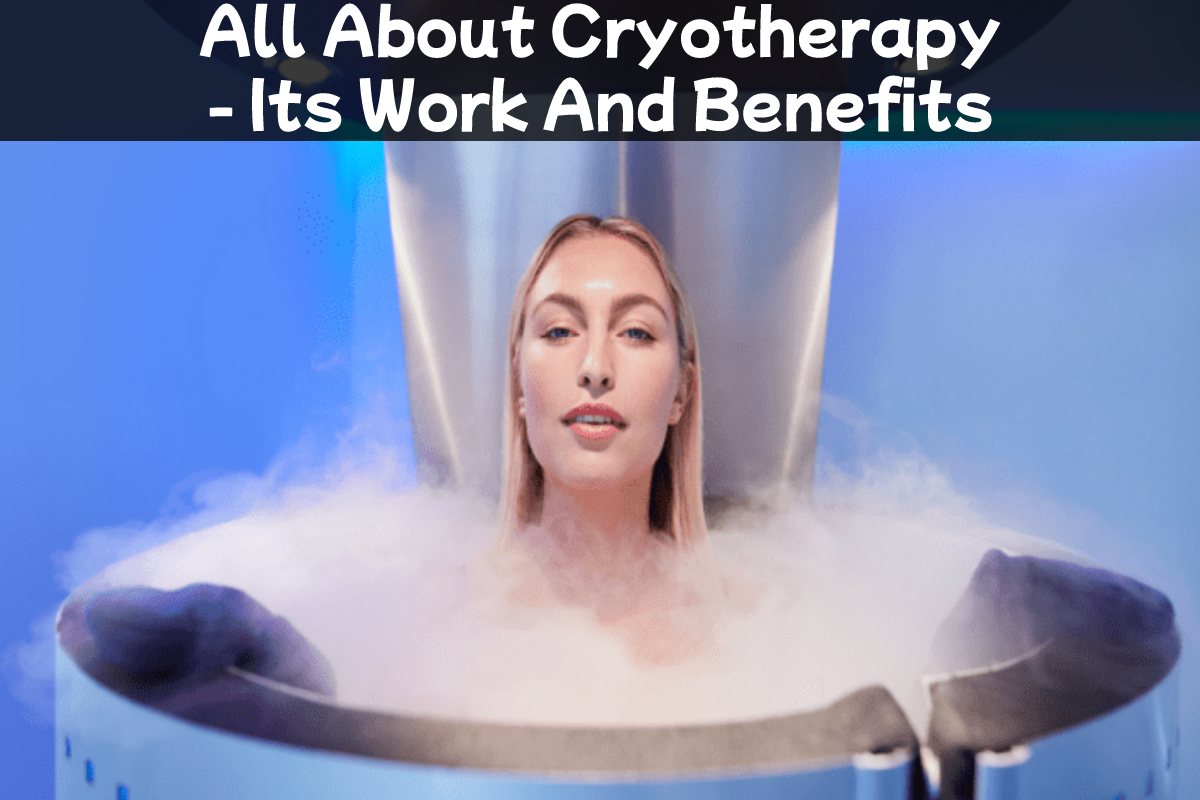Cryotherapy involves the use of solid cold to freeze and remove diseased tissue. Surgeons use it to treat many skin conditions (including warts and papillomas) and certain prostate, cervical, and liver cancer types. This treatment is also called cryoablation.
Table of Contents
What is Cryotherapy?
Cryotherapy is a treatment in which your healthcare provider applies intense cold to freeze and destroy abnormal tissue. To create such severe cold, your supplier will use a substance such as fluid nitrogen or argon gas.
Cryotherapy can be used to delicacy a variety of skin situations and some types of cancer, including prostate and liver cancer. This therapy can affect both external (on the skin) and internal (inside the body) tissues.
This treatment may also be referred to as cryoablation.
Why Do Medics Use Cryotherapy?
Cryotherapy is a minimally invasive therapy. This type of treatment removes damaged or diseased tissues resulting from various diseases. it is usually performed without open surgery. Most people recover from the procedure quickly and with little pain. Your doctor may recommend cryotherapy for:
- Bone cancer.
- Cervical cancer, liver cancer, or prostate cancer.
- Precancerous cells of the cervix (lower end of the uterus).
- Premalignant skin conditions and early-stage skin cancer include squamous and basal cell carcinoma.
- Retinoblastoma (cancer of the retina in children).
- Skin conditions such as warts, skin warts, or brown spots.
How Does Cryotherapy Work?
During cryotherapy, a healthcare professional applies intense cold to abnormal tissues. Unfortunately, cells cannot survive such extreme cold and die after treatment.
Your health care provider may use several substances to create the intense cold used in cryotherapy. These substances may include:
- Liquid nitrogen.
- Liquid nitrous oxide.
- Argon gas.
Benefits Of Cryotherapy
1. Reduces Migraine Symptoms
Cryotherapy can help treat migraines by cooling and numbing the nerves in the neck. One study found that applying a neck compress containing two frozen ice packs to the carotid artery in the neck significantly reduced migraine pain in subjects. It is believed that it cools the blood passing through the intracranial vessels. In addition, the carotid streets are located close to the skin’s surface and accessible.
2. Numb Irritation Of The Nerve
Many athletes have been by cryotherapy for years to treat injuries, which is one reason it can dull pain. First, the cold can numb the irritated nerve. Then, doctors treat the affected area with a small probe inserted into nearby tissues. It can help treat pinched nerves, neuromas, chronic pain, or even acute injuries.
3. Helps Treat Mood Disorders
The ultra-low temperatures of whole body cryotherapy can induce physiological hormonal responses. This contains the release of adrenaline, norepinephrine, and endorphins. This can positively affect those suffering from mood disorders such as anxiety and depression. One study found that whole-body cryotherapy is effective in the short-term treatment of both conditions.
4. Reduces Arthritis Pain
Local cryotherapy is not the only effective way to treat serious diseases; one study found that whole-body cryotherapy significantly reduced pain in people with arthritis. They found that the action was well tolerated. It also allowed for more aggressive physical and occupational therapy. This ultimately made rehabilitation programs more effective.
5. May Help Treat Low-Risk Tumors
Targeted and localized cryotherapy can be used to treat cancer. In this context, we are talking about “cryosurgery.” It works by freezing cancer cells and nearby them with ice crystals. It is currently used to treat certain low-risk tumors of certain types of cancer, including prostate cancer.
6. May Help Prevent Dementia and Alzheimer’s
While more research is wanted to evaluate the effectiveness of this strategy, it is suggested that whole-body cryotherapy may help prevent Alzheimer’s and other types of dementia. It is thought to be an actual treatment because cryotherapy’s antioxidant and anti-inflammatory effects can help combat the inflammatory and oxidative stress responses that occur in Alzheimer’s disease.
7. Manages Several Skin Problems, Including Atopic Dermatitis.
Dry, itchy skin is a hallmark of the chronic inflammatory skin condition known as atopic dermatitis. Therefore, it is logical that local cryotherapy and whole-body it might aid in treating atopic dermatitis because cryotherapy can raise blood antioxidant levels while reducing inflammation. Another study (in mice) focused on the sebaceous glands and examined how they affected acne.
Dangers And Negative Consequences
Numbness, tingling, redness, and skin frustration are the most frequent adverse reactions to cryotherapy, regardless of its kind. Almost often, these adverse effects are transient. However, if they don’t go away in a day, schedule a visit with your doctor.
You should never use cryotherapy for lengthier than recommended for the therapy you are using. Whole-body cryotherapy will take more than four minutes. If you use an ice pack or ice bath at home, you should never apply ice to the area for more than 20 minutes. Instead, wrap the ice parcels in a cloth to protect your skin.
People with diabetes or any other condition that affects their nerves should not use it. They may not be able to completely feel its effects, which can lead to further nerve damage.
Cryotherapy Tips and Tricks
Suppose you have any medical conditions that you would like to be treated with it, discuss them with the person helping you or providing the treatment. Consult your doctor before using any therapy is always a good idea.
- If you are undergoing whole body cryotherapy, wear dry loose clothing. Bring socks and gloves with you to protect yourself from frostbite. During treatment, move as much as possible to maintain circulation.
- If you have cryosurgery, your doctor will discuss specific preparations with you in advance. This may contain not eating or drinking for 12 hours.
The Bottom Line
There is a lot of anecdotal sign and some research supporting claims that cryotherapy can provide health benefits, but whole body cryotherapy is still being researched. Since it’s still being researched, talk to your doctor or health care provider to determine if it’s right for you.

